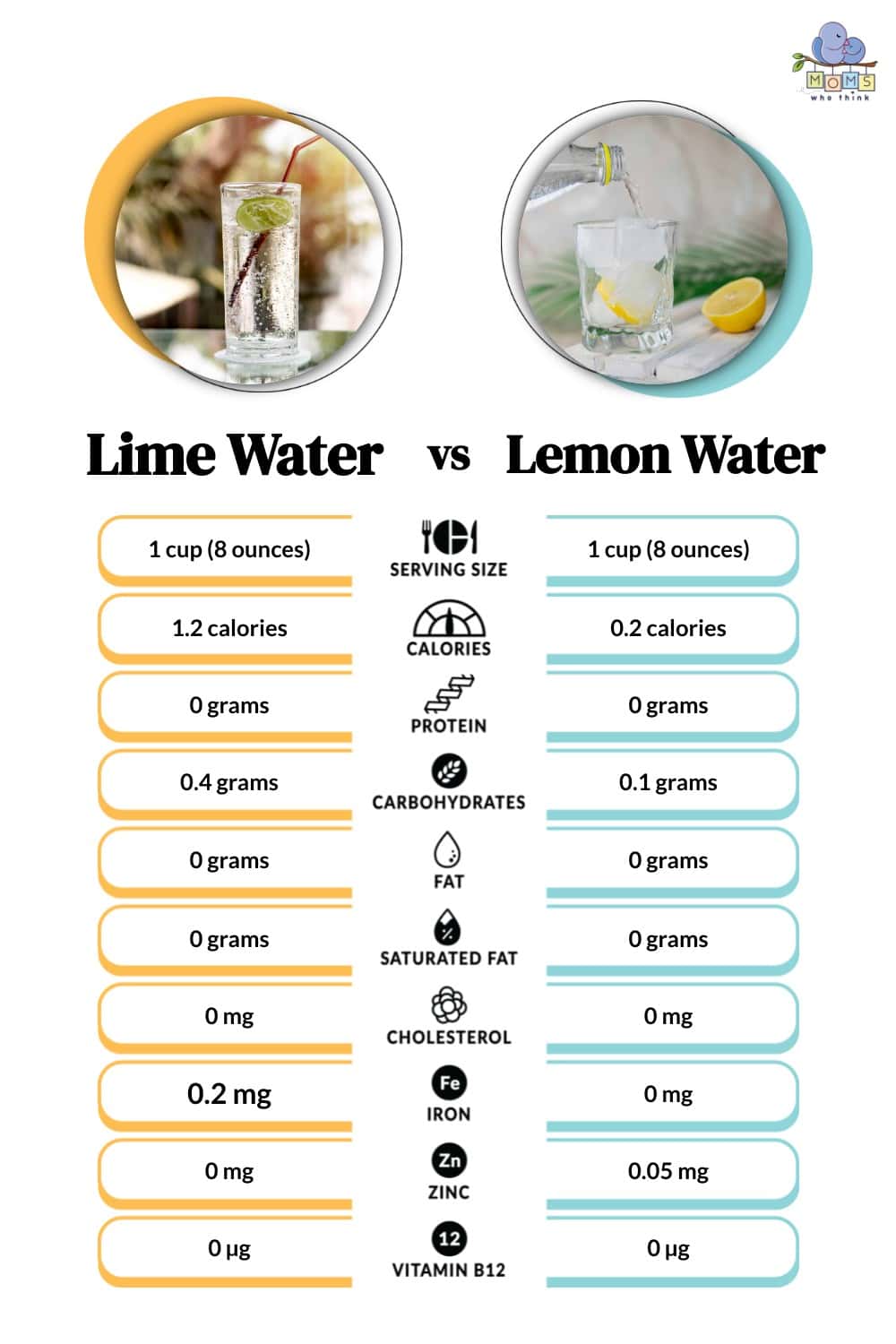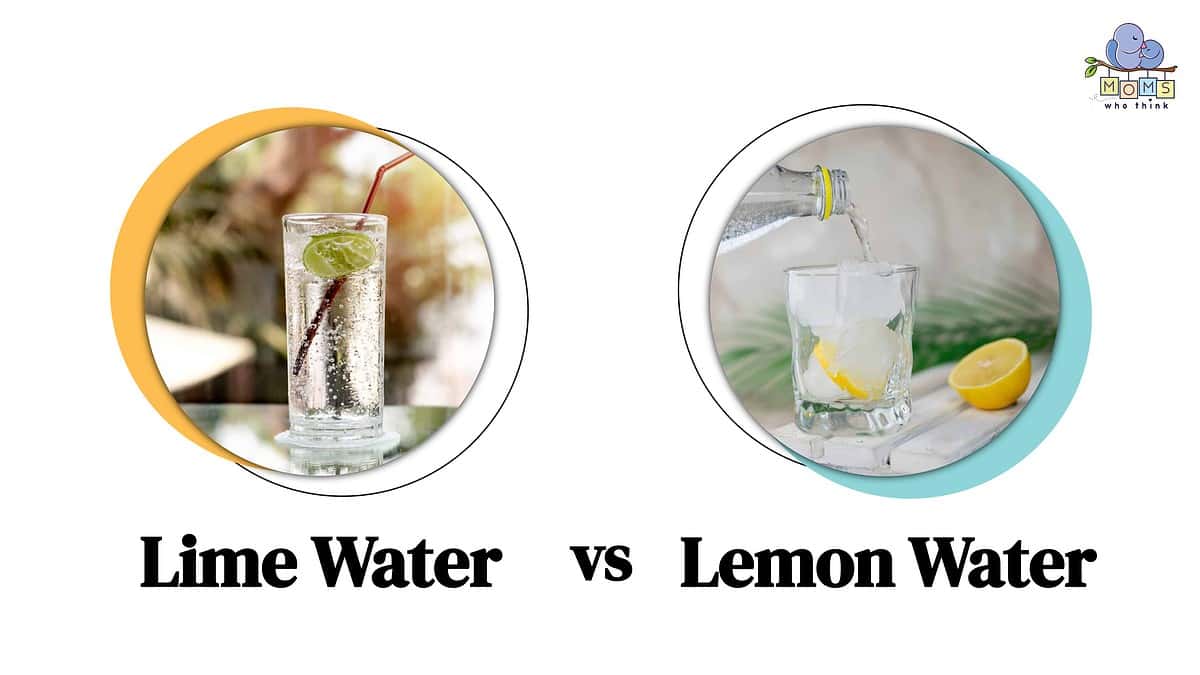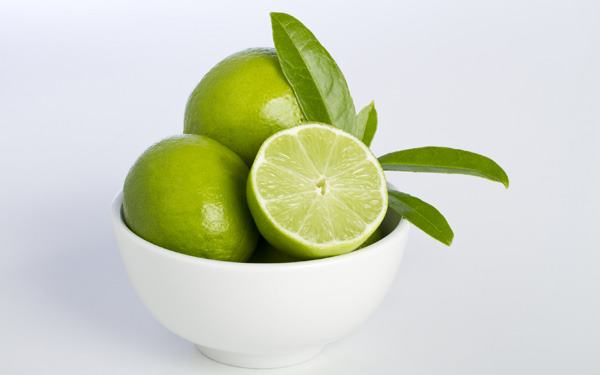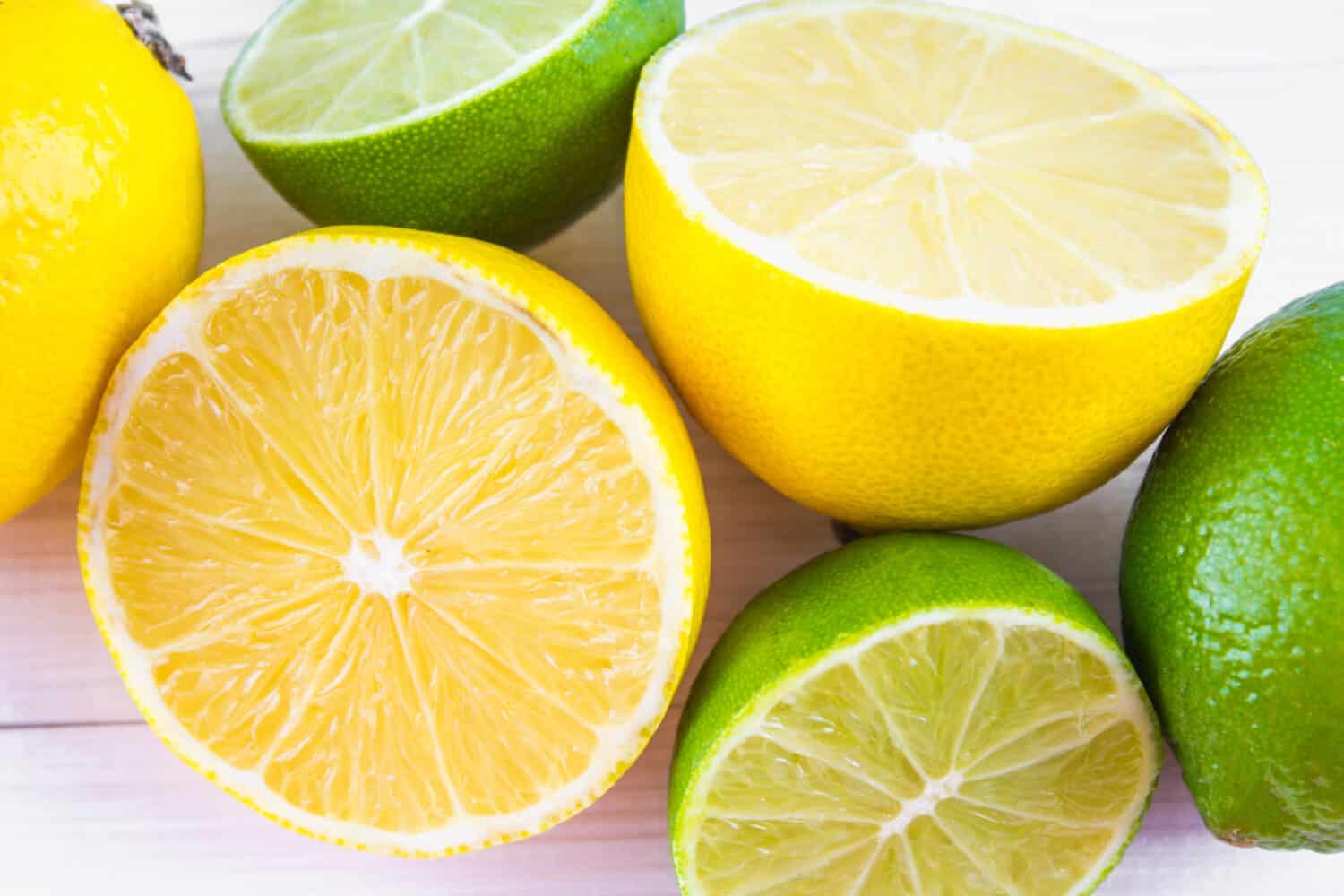Everybody knows drinking water is good for the body, but some people struggle to drink enough water because they don't like the taste. But one way to combat the bland taste of water is to add a slice of lemon or lime. It gives water more flavor and adds some vitamins. Some naturopaths suggest starting the day with warm lemon or lime water to cleanse the body. If you are trying to drink more water but aren't sure when it comes to lime water vs. lemon water, which has more health benefits? The main difference between lime water and lemon water is the taste and the amount of vitamin C.
Lime Water vs. Lemon Water: Which Has More Health Benefits

Adding citrus to your water is a great way to make water more flavorful and add vitamins and antioxidants to your day. But when it comes to choosing whether you should reach for a bright green lime or a shiny yellow lemon, it comes down to taste. The two fruits are almost identical in nutritional value as both have health benefits and a healthy amount of vitamins and minerals.
The most significant difference nutritionally is that lemons have more vitamin C and antioxidants than their green cousins. But that doesn't mean that limes don't have vitamin C, as all citrus has vitamin C, lemons have 88 % of the recommended daily value, and limes have 48% of the recommended daily value, so while lemons have more vitamin C, limes still have plenty. Another difference is that limes have more minerals and vitamins overall than lemons. And when it comes to vitamin A, Medicine Net explains that limes have a clear advantage because lemons don't contain vitamin A at all.
Lime Water vs. Lemon Water Health Benefits

Overall, citrus fruits like oranges, tangerines, grapefruit, lemons, and limes all have health benefits. Research has shown that lemons have antioxidant and anti-cancer properties. And studies have confirmed that limes have antimicrobial properties. However, health claims about warm lemon or lime water aiding weight loss or balancing pH levels have not been scientifically proven.
Drinking both lime water and lemon water offers health benefits. The high vitamin C content supports the immune system, aids iron absorption, and boosts collagen production, while the antioxidants protect against illness and promote heart health. The citric acid is a key player in aiding digestion. With such similar health benefits, the choice between the two comes down to taste. Limes and lemons are tart with that mouth-puckering sour taste, but lemons lean towards the sweeter side and have a slightly sweeter taste compared to limes, which have bitter undertones. Ironically, bitter limes have more sugar and acid than lemons.
What Are Limes?

Limes are often used as a garnish.
©iStock.com/jodiejohnson
Limes are a round green citrus fruit with many varieties. Key, Persian, and Makrut limes are the most popular types of limes. Limes come from Southeast Asia and spread to other parts of the world. Today, most lime production is concentrated in Mexico, India, and China. Limes are available year-round in most supermarkets, but the prices vary due to availability, season, and climate.
Other Varieties of Limes
- Tahiti Limes are less acidic than the others.
- Finger Limes are sour limes shaped like fingers, hence the name, but when you bite into them, you see the insides have small round beads that burst with sour juice.
- Philippine Limes are grown in the Philippines and are a mix of orange and lime with a mildly sour juice.
What Are Lemons?

Fresh lemons are the perfect way to add acid to dishes.
©Davizro Photography/Shutterstock.com
Lemons are yellow, sour, acidic citrus fruit. They are available year-round in the supermarket. The most popular and well-known variety is the Meyer lemon. Lemons, similar to limes, come from Southeast Asia. Lemons have a long history and were first mentioned in early Roman texts. They were used as a commodity, and lemon groves became common throughout ancient Mediterranean countries. In ancient Rome and Egypt, lemon juice was used to treat common colds, clear sinuses, disinfect cuts, and to cure snake bites. Lemons arrived in Europe during the late Medieval period, where they were used to treat insomnia and parasites. Later, both lemons and limes were popular among seafarers because seamen were prone to scurvy, and the high levels of vitamin C helped keep scurvy at bay.
Other Varieties of Lemons
- Eureka Lemons are available year-round, making them a common supermarket lemon.
- Buddha's Hand Lemons are oddly shaped lemons without juice or seeds. These finger-shaped lemons are used for their rind in zest.
- Avalon Lemons are juicier than other varieties and are popular for concentrates.
- Lisbon Lemons are smaller than other lemons, with smooth skin, and produce year-round, making them popular with home gardeners.
History of Limes in Cooking

Limes are great for spicy foods.
©Foxys Forest Manufacture/Shutterstock.com
Limes are commonly used in cooking; the juice and the zest are used to flavor dishes. The best way to get the juice is by rolling the lime under your palm on the counter to soften it and the cut and squeezing each side. A medium lime should yield about an ounce of juice. To use the lime zest, wash the outside of the lime thoroughly and then use a zester.
- The must-have convenient reference guide for every home cook!
- Includes more than 8,000 substitutions for ingredients, cookware, and techniques.
- Save time and money on by avoiding trips to grab that "missing" ingredient you don't really need.
Mexico is one of the biggest producers and consumers of limes. Limes are a key player in Mexican cuisine. They are always on the table for diners to squeeze in their favorite Mexican dishes. And limes are the main ingredient of ceviche. Ceviche is a dish made with raw fish or seafood that is mixed with onions and covered in lime juice. The lime juice marinates and cooks the fish and seafood, making it safe to eat. In Mexico, limes are used outside of the kitchen, too. Lime juice is a common cure for anything from a jellyfish sting to a mosquito bite to acne.
But limes aren't just exclusively used in Mexican cuisine; they are a key player in Thai, Indian, Chinese, and Vietnamese dishes. Limes are also used to make limeade and add a sour component to cocktails. Margaritas, gimlets, and gin tonics are all made with lime juice. Interestingly, bartenders who handle limes frequently may have experienced phytophotodermatitis from lime peels. Lime peels have chemical compounds that can cause the skin to become red and inflamed, sometimes with large blisters. If you have sensitive skin, you should wear gloves when cutting limes.
History of Lemons in Cooking

Lemon adds fresh flavor to chicken and broccoli pasta.
©iStock.com/nitrub
Historically, every part of the lemon is used in the kitchen: the juice, the peel, and even the leaves. Entire lemons are used to make lemon curd, marmalades, and liqueurs like limoncello. The juice is used in baked goods and desserts, while lemon zest adds richer flavors to all kinds of dishes. And lemon leaves seeped in hot water, and honey make a tasty tea.
One of the most popular and refreshing ways to use lemon juice is to make lemonade. This bright, bold drink has a long history and was first used in the first century in ancient Egypt. Later, the lemon-based drink called qatarmizat became popular in the 13th century. By the 17th century, the French had become enamored with lemonade. It was later carbonized, turning basic lemonade into a fizzy sensation. In the U.S., when the Prohibition movement was ramping up, lemonade was advertised as an alternative to alcoholic beverages. Later, lemon became the go-to flavor for custards, puddings, and pies. Lemon meringue pie is still one of the most popular pies in the U.S.
In Europe, lemons were even used as a beauty treatment and skin cleanser. Later, women would use lemon juice to lighten their hair and skin. From medicinal to culinary to beauty, lemons have long been part of civilization.
Recipes with Lemons and Limes
Lime water and lemon water are easy ways to add more citrus to your diet. These fruits are versatile and can be used in sweet and savory dishes. Lemon chicken is a popular way to use lemons, and lemon orzo soup is perfect on a cold day. Limes add a nice acidic component to guacamole and salsas. Both lemons and limes are excellent marinades for salmon and seafood. Homemade salad dressings benefit from a squeeze of fresh lemon or lime. Whether you add lemons and limes to your water, dinner, or dessert, you can feel good knowing these tangy fruits are packed with vitamins and minerals.
- The must-have convenient reference guide for every home cook!
- Includes more than 8,000 substitutions for ingredients, cookware, and techniques.
- Save time and money on by avoiding trips to grab that "missing" ingredient you don't really need.
The image featured at the top of this post is ©Olya Detry/Shutterstock.com

